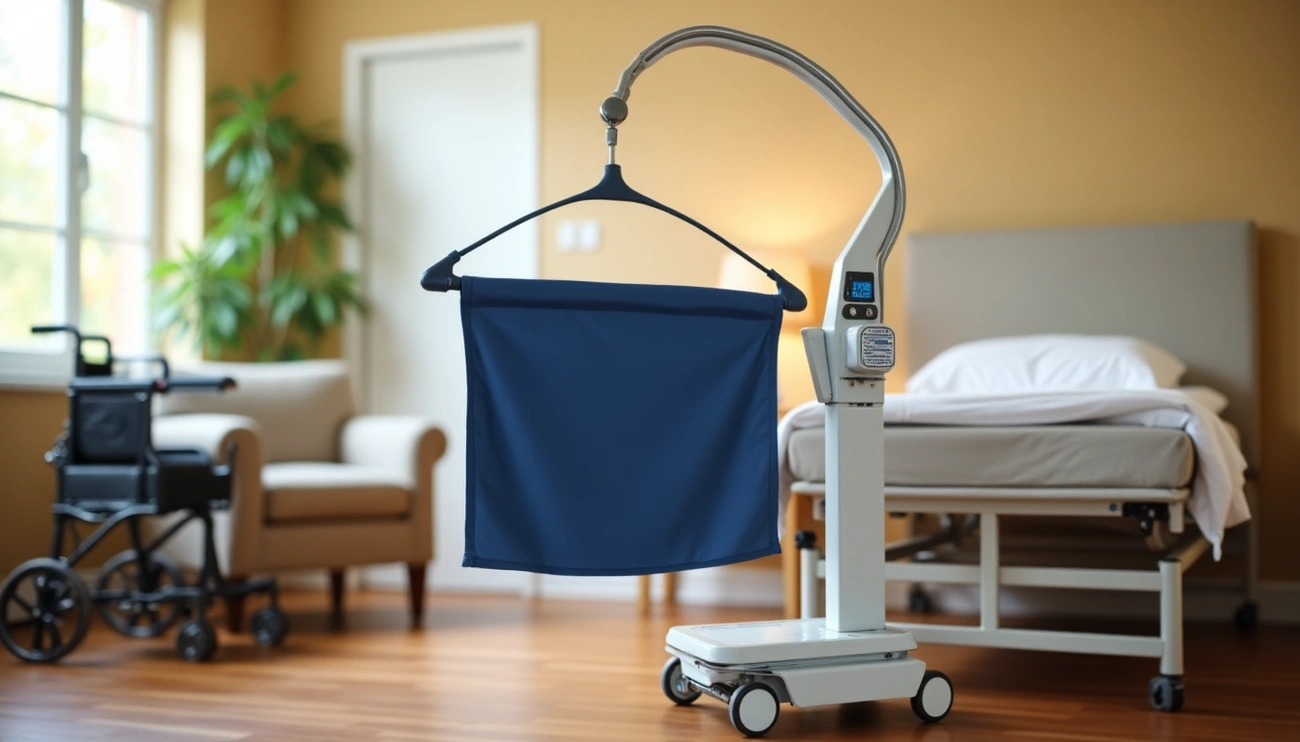Did you know that more than a third of all seniors over age 65 experience at least one unwanted reaction from medication each year when organizing medications elderly becomes challenging?
Even more concerning, older adults are three times more likely to visit the emergency room for adverse drug events and nearly seven times more likely to be hospitalized afterward. With more than half of adults 65 and older taking four or more prescription drugs, medication management for elderly loved ones has become increasingly complex. Common mistakes include dosing errors, missed doses, and taking the wrong medicine – all preventable problems with the right system in place.
For caregivers, this challenge is particularly significant. According to research, 78% report that medication set up for elderly care recipients is their most common task. Many manage five or more medications, with 31% juggling ten or more. Consequently, finding effective medicine organizers for elderly family members isn’t just convenient – it’s essential for their health and safety.
In this guide, we’ll walk through a simple, foolproof system for how to organize pills for seniors that prevents dangerous mistakes. Whether you’re caring for a parent or helping someone how to help elderly remember medications, these practical steps will create a medication routine that works.
Step 1: Gather and verify all medications
Step 1: Gather and verify all medications
The foundation of effectively organizing medications elderly take begins with a thorough inventory. Before creating any system, you must first collect every medication your senior loved one uses—not just some, but all of them.
Create a complete medication list
Gathering medications is only half the battle; documenting them properly is equally crucial. Create a master medication list that includes:
- Medication name – both brand and generic names to avoid confusion
- Dosage – strength (mg, mcg) and amount (one tablet, half tablet)
- Frequency and timing – when and how often it’s taken
- Administration method – oral, injection, topical, etc.
- Purpose – what condition it treats
- Prescribing doctor – name and contact information
- Start date – when the medication was begun
This comprehensive approach should include all prescription medications, over-the-counter drugs, vitamins, and dietary supplements. Furthermore, remember to document non-pill medications such as patches, inhalers, creams, and injections.
Keep this list in multiple locations—one at home, one in your wallet or purse, and potentially a digital copy on your phone. Many healthcare providers express appreciation when patients arrive with complete medication information, as it significantly improves care quality and safety.
Check for duplicates or outdated prescriptions
Once you’ve assembled the complete medication inventory, it’s time for verification. First, check expiration dates on all medications and dispose of any that are outdated.
Next, examine the list for potential duplicate therapies—a common and dangerous issue among elderly patients. For instance, research has identified concurrent use of the same class of medications in older adults, including nonsteroidal anti-inflammatory drugs (1.7% of users), selective serotonin reuptake inhibitors (1.0%), and anticoagulants (3.5%).
Additionally, look for situations where two medications might serve the same purpose or where one doctor prescribed something without knowing about another doctor’s prescription. This occurs frequently after hospital stays or when seeing specialists.
Ideally, schedule an annual “medication review” with your loved one’s primary physician. Bring everything—including all supplements—in a bag for a thorough evaluation. This practice helps eliminate unnecessary medications and reduces potential adverse drug events.
Step 2: Choose the right medication organizers
Step 2: Choose the right medication organizers
Selecting appropriate medication organizers marks a crucial step in preventing medication errors for elderly individuals. With numerous options available, finding the right solution can initially seem overwhelming.
Compare types of pill boxes and dispensers
Pill organizers generally fall into two main categories. Basic pill boxes feature compartments for each day of the week, with some offering additional divisions for morning, afternoon, and evening doses. These simple containers cost between $10-$25 and provide a straightforward solution for those with uncomplicated medication regimens.
Automated medication dispensers, however, offer enhanced functionality. These devices automatically dispense pre-loaded medications according to a programmed schedule. Many include audible reminders, with some models even alerting caregivers via phone calls or text messages when doses are missed. Though significantly more expensive ($75-$1400), automated dispensers provide invaluable assistance for seniors with memory issues, specifically since 40% of older adults report memory impairment.
Consider needs for multiple doses per day
The complexity of medication schedules heavily influences which organizer type will work best. Indeed, if your loved one takes pills at multiple times throughout the day, a basic once-daily pill box will prove insufficient.
For those requiring medication several times daily, look for organizers with:
- Separate compartments clearly labeled for morning, afternoon, evening, and bedtime doses
- Compartments large enough to hold all necessary pills, especially if taking larger medications
- Features that make opening easier, like push-button designs, particularly important since nearly half of U.S. seniors have arthritis
For seniors with vision decline (affecting 64% of elderly individuals), consider organizers with larger text or color-coding systems to distinguish different times of day. Meanwhile, those struggling with adherence might benefit from dispensers with alarm functions or automated features that lock medications until the designated dose time.
The right choice ultimately depends on the individual’s specific needs, medication regimen, and physical capabilities rather than simply price point or convenience factors.
Step 3: Set up a simple, error-proof system
Step 3: Set up a simple, error-proof system
Once you’ve gathered all medications and selected appropriate organizers, creating a foolproof system becomes vital. A well-designed medication system dramatically reduces errors that plague medication management for elderly individuals.
Label compartments clearly
Proper labeling forms the cornerstone of any effective medication system. First, ensure pill organizers have clearly marked compartments for each dosing time. Many quality organizers come with compartments pre-printed with “Morning,” “Noon,” “Evening,” and “Bed” designations. Moreover, some feature Braille markings with arrows pointing to openings, making them accessible for visually impaired seniors.
For medications outside organizers, always maintain original pharmacy labels that detail the drug name, dosage instructions, and warnings. Remember that pharmacy labels serve as abbreviated versions of drug information sheets, increasing medication efficacy while eliminating accidental misuse.
Use color coding for time of day
Color-coded systems create visual cues that help seniors remember medication schedules. Most high-quality organizers utilize different colors for different days and times. These color distinctions allow elderly individuals to easily organize a week’s worth of medications into daily color-coded compartments.
The color system works effectively because:
- Different colors create instant visual recognition
- Colors bypass language barriers
- Color associations remain easier to remember than text instructions
Store medications in a consistent location
Medication should always be stored safely in a dry, cool place. Firstly, avoid keeping prescriptions in bathrooms where humidity can damage medications. Instead, designate a specific location that your loved one visits regularly as part of their daily routine.
Try linking medication administration with existing habits or daily routines to create a natural rhythm they can easily follow. Creating this habit feels natural, helping seniors fall into a consistent routine without expending excessive mental effort.
Absolutely keep all medicines out of children’s reach, as some medications have bright colors and shapes that children might mistake for candy. Finally, never take medicine in the dark or when tired or distracted, as this might lead to taking the wrong medicine or incorrect dosage.
Step 4: Maintain and update the system regularly
Step 4: Maintain and update the system regularly
Establishing consistency remains the cornerstone of effective medication management for elderly loved ones. Even the best-designed system requires ongoing maintenance to prevent potentially dangerous mistakes.
Refill organizers weekly
Set aside a specific time each week to refill pill organizers—ideally the same day and time to establish a routine. Research shows that filling pill boxes once weekly significantly improves medication adherence and reduces errors. During refill sessions:
- Check remaining quantities of each medication and request refills at least 5 days before running out
- Document each medication as you load it to prevent missed doses
- Store the original bottles nearby for reference during refilling
Many caregivers find Sunday evenings or Monday mornings ideal for this task, as it ensures medications are ready for the entire week ahead. Consider using medication synchronization services offered by many pharmacies, which allow you to refill most prescriptions simultaneously rather than throughout the month.
Track changes after doctor visits
Doctor appointments often result in medication changes that must be promptly incorporated into your system. Subsequently, update your master medication list whenever:
- A new medication is prescribed
- Dosage is adjusted
- A medication is discontinued
- Administration timing changes
Following each medical appointment, review all prescription bottles against your medication list for accuracy. Healthcare professionals recommend documenting start dates for new medications and stop dates for discontinued ones. This documentation proves invaluable during emergencies or when communicating with multiple healthcare providers.
Involve a backup caregiver if possible
Research indicates that 40% of elderly patients have spouses as primary medication managers, while 44% rely on adult children. Nonetheless, having a secondary caregiver familiar with the medication routine provides essential support.
A backup caregiver should:
- Understand the complete medication schedule
- Know where medication lists are stored
- Have access to pharmacy information
- Be introduced to healthcare providers when possible
Prior to involving others, discuss with your loved one to ensure they’re comfortable with this arrangement. Studies show caregivers often encounter resistance when attempting to help with medications. Hence, approach this conversation with sensitivity, emphasizing that backup support enhances safety rather than diminishes independence.
Conclusion
Organizing medications for elderly loved ones undoubtedly represents one of the most critical responsibilities for caregivers. Throughout this guide, we’ve explored a comprehensive system that dramatically reduces the risk of dangerous medication errors. From gathering and verifying all medications to selecting appropriate organizers, establishing clear labeling systems, and maintaining regular updates, each step builds upon the previous one to create a foolproof medication management routine.
Most importantly, consistency forms the foundation of successful medication management. The system works effectively only when regularly maintained and updated after each doctor visit or prescription change. Although this organization might initially seem time-consuming, the investment pays dividends through improved health outcomes and peace of mind. Research clearly shows that proper medication management significantly reduces emergency room visits and hospitalizations among seniors.
Remember that adaptation remains essential as needs change. What works today might need adjustment as your loved one’s health conditions or cognitive abilities evolve. Therefore, periodically reassess the effectiveness of your chosen organizers and systems. Above all, communication with healthcare providers must continue throughout this process—they serve as valuable partners in ensuring medication safety.
The steps outlined in this guide offer a straightforward path toward medication safety, but they require commitment and attention to detail. By following this systematic approach, you transform a potentially dangerous aspect of elderly care into a manageable, routine part of daily life. Your diligence makes all the difference between medication becoming a health hazard or remaining the healing tool it’s meant to be.
FAQs
Q1. What’s the best way to organize medications for seniors? Use pill organizers with separate compartments for each day and time. Label them clearly, consider color-coding for different times of day, and store them in a consistent, easily accessible location. For complex regimens, automated dispensers with reminders can be helpful.
Q2. How can medication errors be prevented in elderly care? Create a complete medication list, regularly verify and update it, use appropriate organizers, and set up a simple, error-proof system. Refill organizers weekly, track changes after doctor visits, and involve a backup caregiver if possible. Always follow the “5 Rs” of medication administration: right person, medicine, route, dose, and time.
Q3. What should be included in a comprehensive medication list for seniors? A comprehensive list should include the medication name (brand and generic), dosage, frequency, administration method, purpose, prescribing doctor, and start date. Include all prescription drugs, over-the-counter medications, vitamins, and supplements. Keep copies of this list in multiple locations for easy access.
Q4. How often should medication organizers be refilled for the elderly? Refill medication organizers weekly, preferably on the same day and time to establish a routine. This practice significantly improves medication adherence and reduces errors. Use this time to check remaining quantities, request refills if needed, and review any recent changes to the medication regimen.
Q5. What role can technology play in managing medications for seniors? Automated medication dispensers can be valuable for seniors, especially those with memory issues. These devices dispense pre-loaded medications on schedule, provide audible reminders, and some can even alert caregivers if doses are missed. While more expensive than basic pill boxes, they offer enhanced functionality for complex medication regimens.




